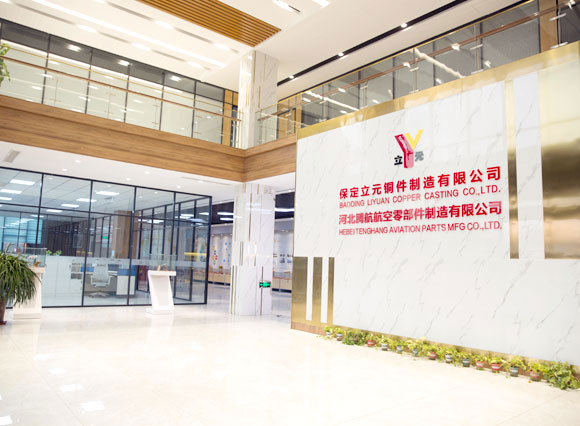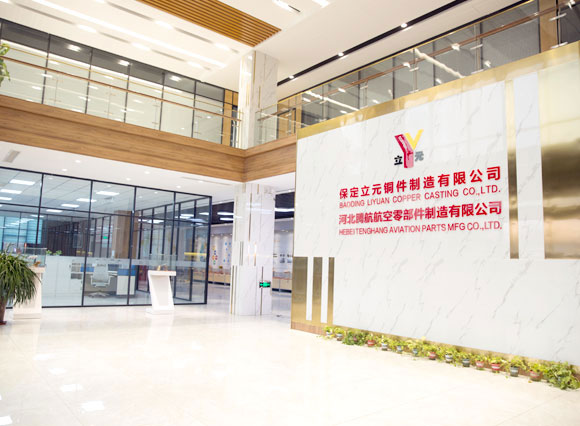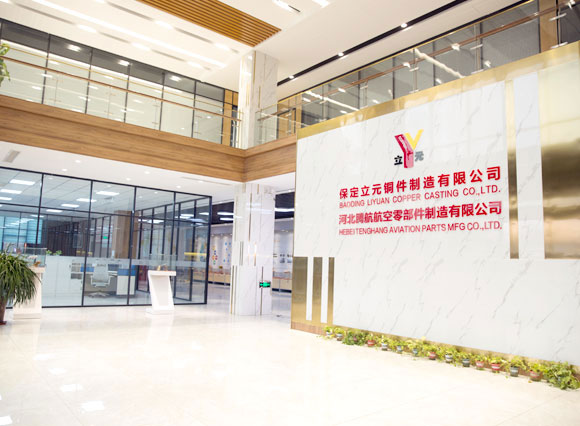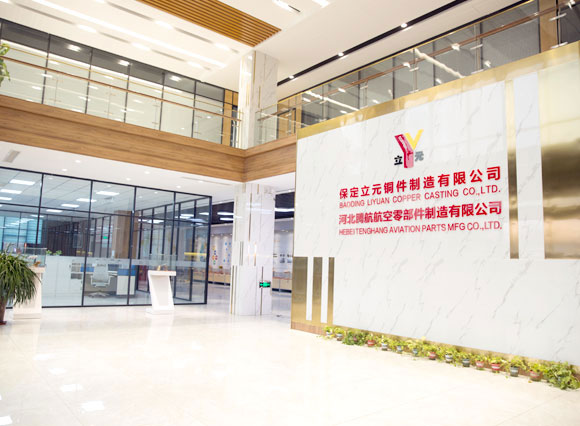1. Development trend of copper and copper alloy materials
By analyzing the history and characteristics of copper application and development, it can be concluded that the development of new alloys with new functions and characteristics and the research of new material forming technology are two basic ways to develop new application fields of copper alloy materials and meet the new needs of sustainable development of human society.
Based on the traditional copper and its alloy system, the research and development direction of high-performance copper alloy materials at present mainly includes four aspects: high purification, microalloying, complex multi-element alloying and composite material.
1.1 high purification
The main purpose of high purification is to improve the conductivity and thermal conductivity of materials as much as possible. The copper content of industrial copper is from 99.90% to 99.95%, and then to 99.99% (4N) or even higher. For example, the impurity content of ultra pure copper containing 99.9999% (6N) copper is more strict. For example, the content of oxygen (o) decreased from 0.01% ~ 0.05% to 0.001% ~ 0.006%, until 0.0002% ~ 0.0003%. Minimize the influence of impurities on conductivity and thermal conductivity. Typical application examples include high purity copper for network transmission connecting wire, high purity oxygen free copper for electric vacuum device, precise guidance and high fidelity signal transmission, single crystal copper and ultra pure copper for superconductor, etc.
Compared with polycrystalline copper, the tensile strength of single crystal copper decreased by 24.71%, the elongation increased by 2.39 times, the area shrinkage increased by 4.14 times, the resistivity decreased by 31.7%, less than 1.72 × 10-8 Ω· m, the oxygen content was less than 5 × 10-6, the hydrogen content was less than 0.5 × 10-6, and the density was more than 8.92t/m3.
On the other hand, the development of copper alloy materials towards high purification requires high purification of copper alloy matrix in Microalloyed copper alloy to ensure that the materials have higher comprehensive properties.
1.2 microalloying
The purpose of microalloying is to sacrifice the least conductivity and thermal conductivity for other properties, such as the substantial increase of strength. For example, adding about 0.1% of Fe, Mg, Te, Si, Ag, Ti, Cr, Zr and rare earth elements can improve its strength, hardness, softening temperature resistance or machinability. Microalloyed copper is one of the most popular copper alloy materials. Oxygen toughened copper and high strength and high conductivity copper alloy are the main microalloyed copper.
The concept of oxygen copper is relative to oxygen free copper. Its copper content is more than 99.90%, which is equivalent to general pure copper, but its oxygen content is controlled within 0.005% ~ 0.02%, and its conductivity can be more than 100% IACS. This is because a certain amount of oxygen plays a certain role in the oxidation and combination of the impurity elements between the crystals and purifies the matrix to a certain extent. The biggest characteristic of the production of copper oxide is the low cost of its raw materials. The old red copper material with low grade is used to produce the copper oxide material with high conductivity and thermal conductivity.
High strength and high conductivity copper alloy has been favored by material science and technology workers all over the world because of its good comprehensive properties. It is the fastest developing copper alloy in recent years. The main alloying elements are p, Fe, Cr, Zr, Ni, Si, Ag, Sn, Al and so on. The representative alloy systems are Cu-P, Cu-Fe-P, Cu Ni Si, Cu Cr, Cu Cr Zr, Cu Ag, Cu Ag Cr, Cu Ag Zr, Cu Sn and so on. The sum of other components in the alloy can be 0.01% ~ 0.1% at least, and 3% at most. Its common characteristic is that the material has high strength and high conductivity.
1.3 complex multiple alloying
In order to further improve the strength, corrosion resistance, wear resistance and other properties of copper and its alloys, or in order to meet some special application requirements, on the basis of existing bronze, brass, etc., it is added to five, six and other components to achieve different functions of materials such as high elasticity, high wear resistance, high corrosion resistance, easy cutting, etc., multi-component (four or more components) are alloyed into Another hot topic of copper alloy development is the emergence of new complex alloys. Typical alloys include multi-element manganese brass, silicon manganese brass, boron tin brass, lead-free free cutting copper alloy, etc. Its common feature is high strength and high toughness, and its tensile strength is generally over 600-700mpa. For example, the new type of manganese brass hmn59-2-1-0.5 (Cu: 58% ~ 59%, Mn: 1.8% ~ 2.2%, al: 1.4% ~ 1.7%, Fe: 0.36% ~ 0.65%, Si: 0.6% ~ 0.9%, SN: 0.1% ~ 0.4%, Pb: 0.3% ~ 0.6%, Zn allowance) has a strength of over 600MPa, an elongation of over 20%, and a hardness of over 180 Hb. Elongation over 14% 。 Using these materials to make automobile synchronizer ring, high pressure pump friction pair or electrode copper wedge, its service life is one to several times higher than that of common brass or bronze.
In recent years, with the improvement of people's awareness of environmental protection, environmental protection has become the theme of the development of world civilization. People pay more attention to the influence of lead, beryllium, cadmium, arsenic and other harmful elements. The development of environmental friendly copper alloy materials such as lead-free cutting brass, beryllium free high elastic copper alloy, arsenic free corrosion-resistant copper alloy has become one of the important development directions of copper alloy materials.
1.4 composite materials
There are two main ways of copper alloy materials: one is to introduce alloy elements to strengthen copper matrix to form alloy; the other is to introduce the second strengthening phase to form composite materials. For example, dispersion strengthened oxygen free copper is a typical artificial composite, and commonly used dispersion particles are Al2O3, ZrO2, Y2O3, ThO2, etc. The artificial composite material method refers to the material made by artificially adding the second phase particles, whiskers or fibers to the copper to strengthen the copper matrix, and by introducing uniformly distributed, fine oxide particles with good thermal stability into the copper matrix to strengthen the copper. The composition of the second phase is generally below 1% or even lower to 0.01%, but the strengthening effect on the material is very obvious, especially the high temperature strength of the material is greatly improved. For example, cu-2.5% TiB2 (volume fraction), conductivity 76% lacs, tensile strength 675mpa; cu-0.5% Al2O3 (mass fraction) series alloy, the greenhouse strength of the material can reach 500 ~ 800MPa, conductivity can reach 85% lacs or above, and the strength of the material still reaches 200 ~ 400MPa after burning hydrogen at 900 ℃.
The other is in-situ composite (in-situ conforming material). In-situ composite is a kind of composite material which generates reinforcement through exothermic reaction between elements or between elements and compounds in copper matrix. In this kind of composite, the reinforcement has no interface pollution and good interface compatibility with the matrix. Compared with the traditional artificial reinforcement composite, its strength is greatly improved, while maintaining good toughness and high temperature performance. For example, the cu-20% Nb (volume fraction) composite has very high tensile strength, close to 2000 Pa; the conductivity of cu-18% (mass fraction) is 66.6% lacs, and the tensile strength is 1450 MPa. Other composite materials, such as Cu Fe and Cu TA system, also have higher room temperature strength and high temperature strength, and the strength of the material can reach 800 ~ 1500MPa generally.
2. Classification of copper processing products
According to its shape, copper and its alloy processing materials are divided into eight varieties (commonly known as eight categories), including plate, strip, foil, row, pipe, bar, wire and profile. Generally speaking, when the thickness of the strip is less than 0.1mm, it is called foil (the thickness of the strip is less than 0.15mm, which is called foil by the customs of our country). Apart from the straight strip and coil, the coil shape with the diameter less than 5mm is usually called wire rod, and the one supplied by the straight strip is called small rod.
State and representation
| 名称 | 采用的汉字及汉字拼音 | 代号 | |
| 汉字 | 汉语拼音 | ||
| 热加工 | 热 | RE | R |
| 退火(焖火) | 焖(软) | MEN | M |
| 淬火 | 淬 | CUI | C |
| 淬火后冷轧(冷作硬化) | 粹、硬 | CUI YING | CY |
| 淬火(自然时效) | 硬、自 | CUI XI | CZ |
| 淬火(人工时效) | 淬、时 | CUI SHI | CS |
| 硬 | 硬 | YING | Y |
| 3/4硬、1/2硬、1/3硬、1/4硬 | 硬 | YING | Y1、Y2、Y3、Y4 |
| 特硬 | 特 | TE | T |
| 淬火后冷轧、人工时效 | 淬、硬、时 | CUI YING SHI | CYS |
| 热加工、人工时效 | 热、时 | RE SHI | RS |
| 淬火、自然时效,冷作硬化 | 淬、自、硬 | CUI ZI YING | CZY |
| 淬火、人工时效、冷作硬化 | 淬、时、硬 | CUI SHI YING | CSY |
The processing of copper and its alloy is used to define and express the state of its material by the amount of cold deformation of rolling or drawing. In order to remedy this situation, a set of standard codes for heat-treatable copper alloy has been established, and each state has been standardized.
2.1 plate with foil
Plate, strip, strip and foil are the products of plate, strip and foil according to their overall dimensions.
2.1.1 plate
The last rolling state of sheet, strip and foil products is divided into hot-rolled sheet and cold-rolled sheet
The common size range of hot-rolled plate is: 4-150 mm (thickness) × 200-3000 mm (width) × 500-6000 mm length. The common dimensions of cold-rolled sheet are: 0.2-12mm (thickness) × 100-3000mm (thickness) × 500-6000mm (length).
The states of sheet products include hot rolled state (R), soft state (m), semi hard state (Y2), hard state (y), super hard state (T) and heat treated state (CS).
Strip
2.1.2 strip
The size range of the strip is 0.05-3mm (thickness) - 10-1000mm (width), which is supplied in rolls. The states of strip products are divided into soft state (m), semi hard state (Y2), hard state (y) and super hardness (T).
2.1.3 strip (also known as copper strip)
The thickness of strip is between plate and strip, and the size range is generally 0.2-10 mm (thickness) × 50-100 mm (width) × 1500-2000 mm (length). The commonly used strip products are pure copper strip, brass strip, bronze strip, etc.
2.1.4 foil
Domestic copper processing foils refer to plates and strips with a thickness of less than 0.05mm, while foreign ones refer to plates and strips with a thickness of less than 0.1M, all of which are rolled copper foils (rolled copper foils), excluding electrolytic copper foils.
Commonly used foil products are pure copper foil, brass foil, bronze foil, white copper foil.
The size range of the foil is 0.05-0.1mm (thickness) × 40-600mm (width). It is supplied in rolls. The length should not be less than 5000mm generally, and its state can be divided into soft state (m) and hard state (y). Copper alloy foil products are mostly hard, and pure copper products with thickness no more than 0.02mm are generally hard.
2.2 tube rod and wire
Tube, bar and wire are divided into tube, bar and wire according to product shape.
2.2.1 pipe
The pipes are divided into round, trapezoid, triangular, rectangular and square pipes, with the size range of 0.5-360mm (outer diameter) × 0.1-50mm (wall thickness), which are supplied in straight or rolled form. The products are divided into extruded (R), soft (m), light soft (M2), hard (y), semi hard (Y2) and 1 / 3 hard (Y3) products.
2.2.2 bar
The bar is divided into round bar, hexagonal bar, square bar, rectangular bar and guide bar. The size range is 3-120mm (diameter) × 500-5000 (length). The straight bar is supplied. The product is divided into extruded (R), soft (m), Forged (M2), hard (y), semi hard (Y2), soft aging (tf00) and hard aging (tf04) products.
2.2.3 copper coil bar
Copper coil bar refers to the blank for producing wire rod, also known as copper rod. It is divided into bright bar and black bar. The black bar is hot rolled by the ship shaped ingot on the cross row pass mill. Its surface is seriously oxidized and has been basically eliminated. The diameter of the wire rod is between 6-20 mm, which is produced by continuous casting and rolling or updraft (or horizontal) continuous casting.

 中文
中文 EN
EN








